GopherCon 2019 - On the road to Go 2
Alan Braithwaite for the GopherCon Liveblog
Presenter: Russ Cox
Liveblogger: Alan Braithwaite
Overview
We're on the road to Go 2. But where exactly are we? Where are we headed? Come find out.
Summary
Development on Go has been a loop consisting of the following stages:
- experiment
- simplify
- ship
As we develop Go, we experiment and solicit feedback from the community to gauge whether or not that experiment will actually help simplify development and benefit the language. If it does, we will adopt that experiment.
The main areas of focus for Go2 are:
- Error handling
- Generics
- Dependency Management
- Tooling
Introduction

Development on Go began with a loop consisting of the following stages:
- Experiment
- Simplify
The 4 Rs of simplifying guide the process:
- Reshaping
- Redefining
- Removing
- Restricting
Let's see some examples.
Reshaping
We reshaped the go command from many binaries into a single binary.
Redefining
During early development, we noticed that appendToList was being rewritten
frequently. This led to redefining those functions into the function we now
know as append. It initially only supported bytes slices, but was extended
to support all slices.
Removing
If something isn't useful to the language or an experiment didn't work, we remove it.
Restricting
All Go files must be utf-8. Other encodings are not supported. This simplifies the toolchain by not having to support a wide range of encoding formats.
The initial development process was too simple however, because eventually we have to ship. That was added as an explicit step to enable shipping of production Go code and to allow users to experiment with the language.
The loop now becomes:
- Experiment
- Simplify
- Ship
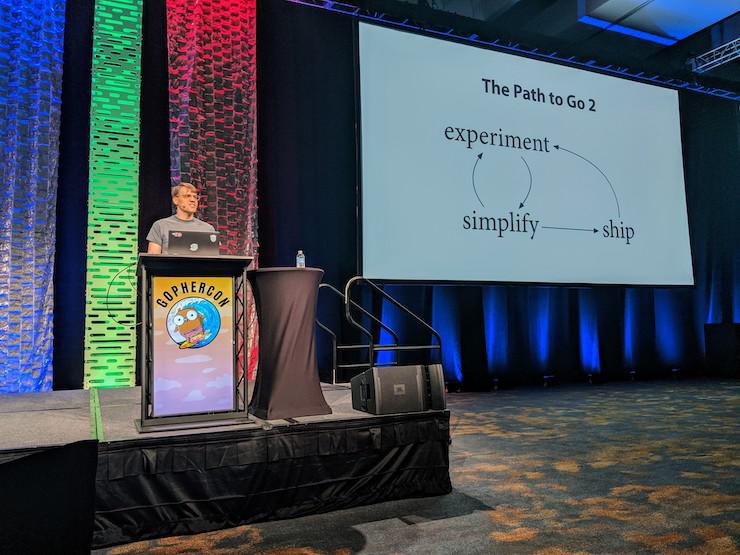
After Go1.0, any simplification must not include breaking changes.
The path to Go2
The path to Go2 is much like the path to Go1: Experiment, simplify, ship.
The main areas of focus for Go2 are:
- Error handling
- Generics
- Dependency Management
- Tooling
Error Handling
Writing a program correctly without errors is hard. Writing a program correctly accounting for errors and external dependencies is much more difficult.
History of the error type
Circa 2008: Original syscall error was just an int.

This evolved and as the standard library was written, more context was needed for the higher level libraries to determine how to handle errors properly.
2h after writing that initial code, we had an error type:
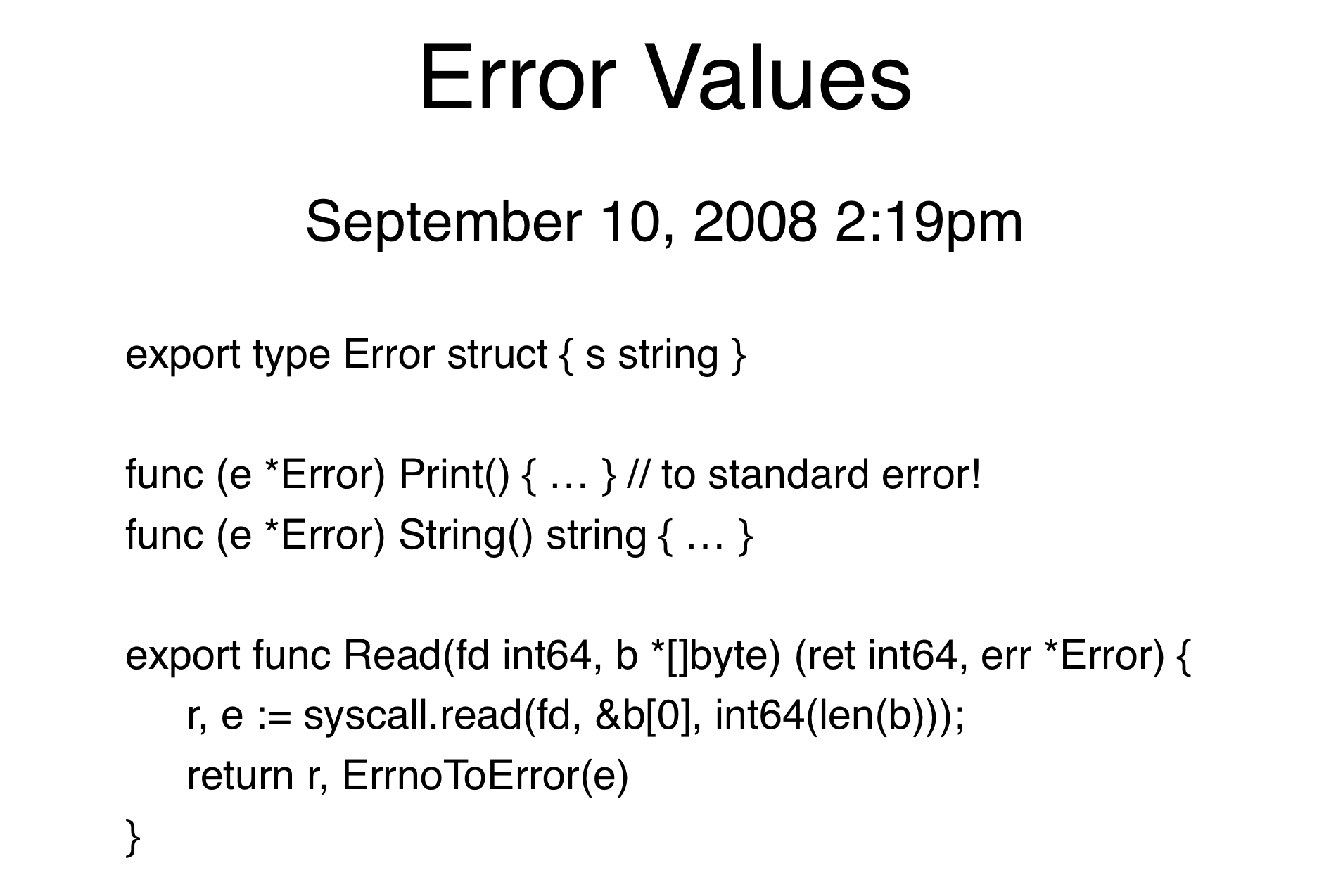
This API lasted 7 months. It was eventually reshaped into the error type that we know today.
As we developed the higher level libraries more, we noticed a pattern emerge of handling nested errors that many helper packages implemented.

Errors in Go1.13
Thanks to these experiments, Go1.13 introduces the following error handling helpers:
- an optional Unwrap interface.
- errors.Is
- errors.As
The Unwrap interface remains optional, and aims to help library authors expose more information about the errors they return.

Go1.13 also introduces errors.Is and errors.As, helper functions to simplify using Unwrap.
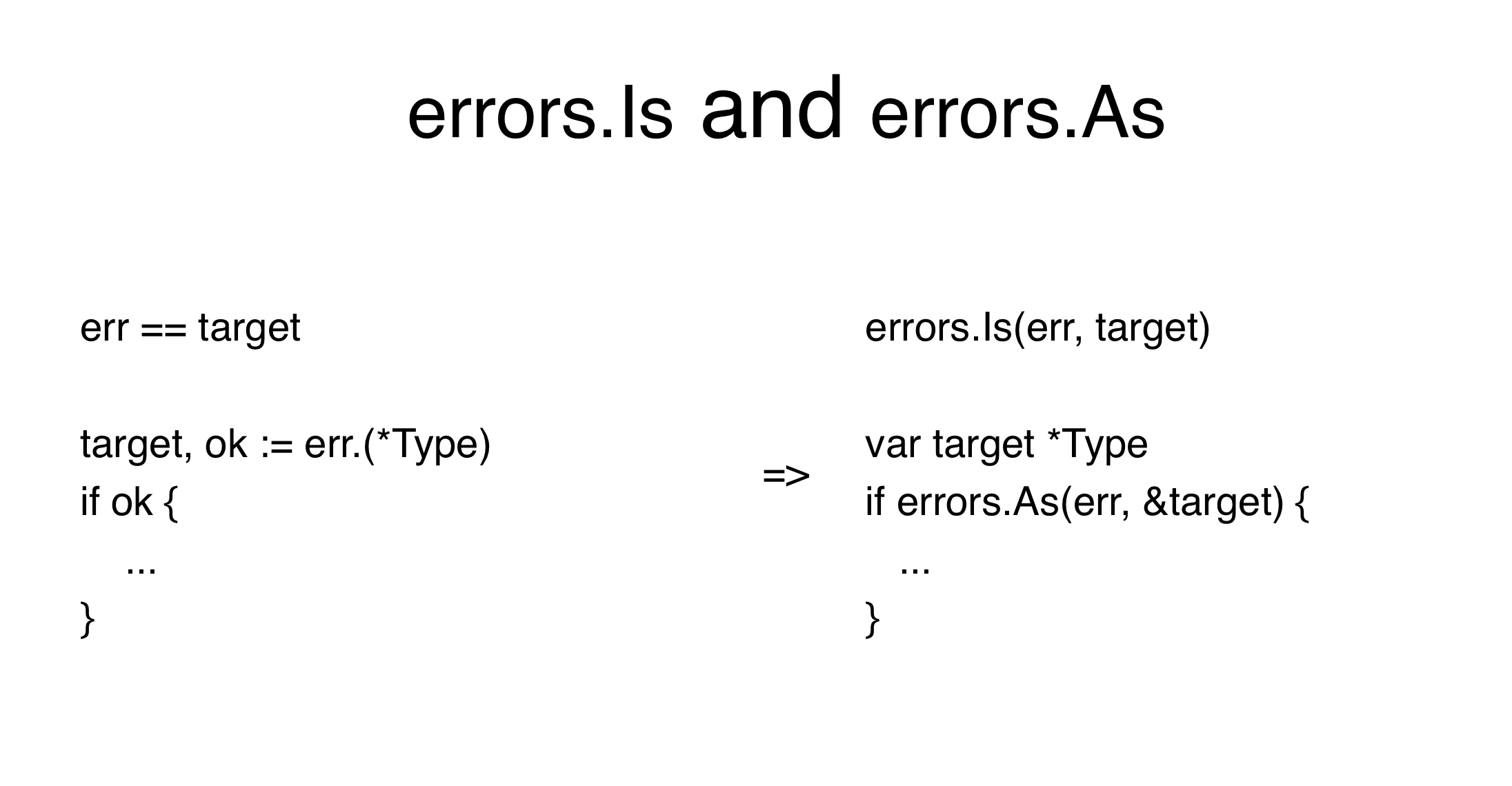
Another concern that the community raised was readability of code which handled many errors. This is important to us because as programmers the more error branches we have to keep track of, the harder it is to reason about the code.
This concern eventually led to the Check proposal. This simplified Go by simplifying error handling readability and removing lines of code.
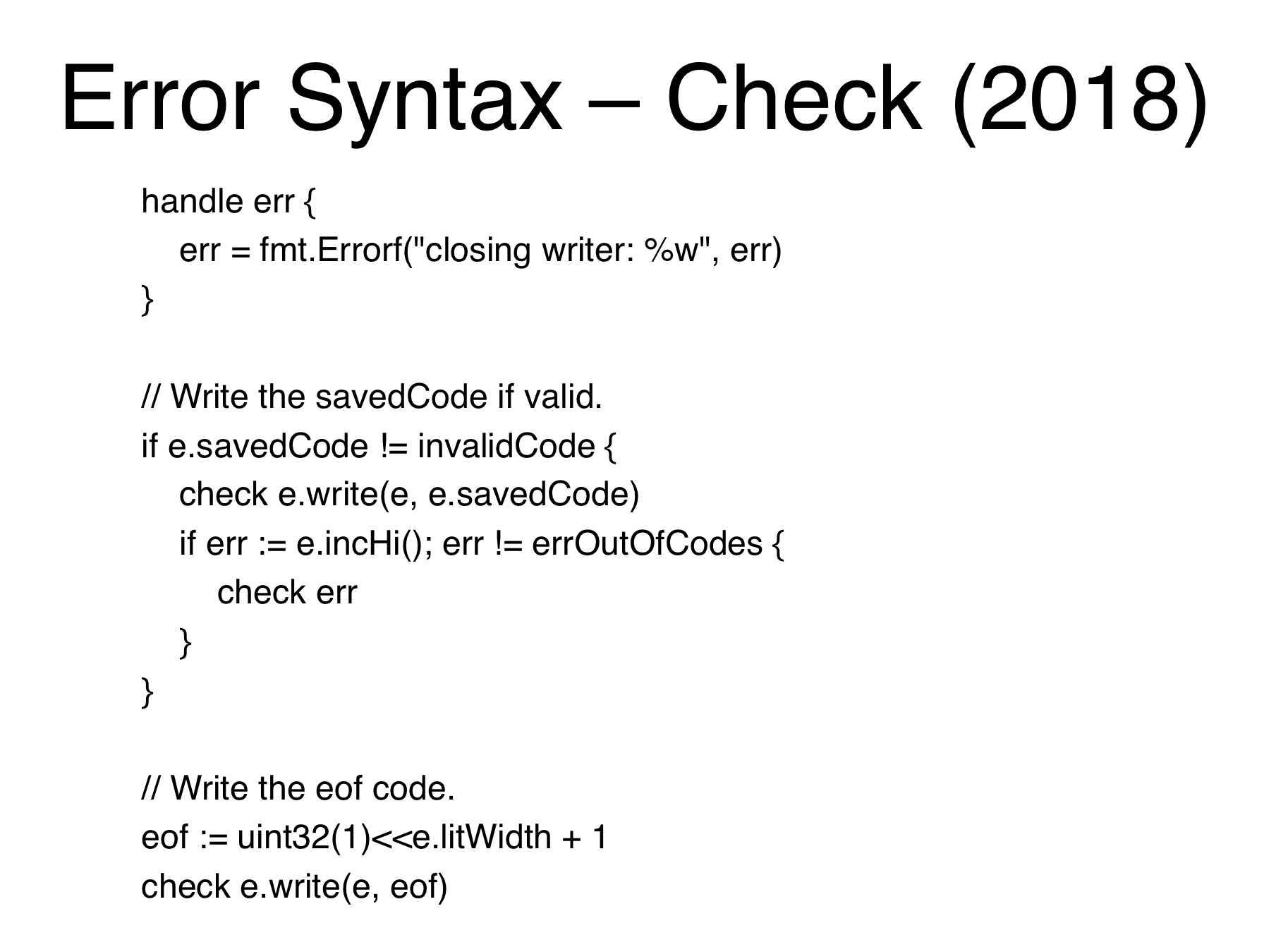
The check proposal eventually became try.
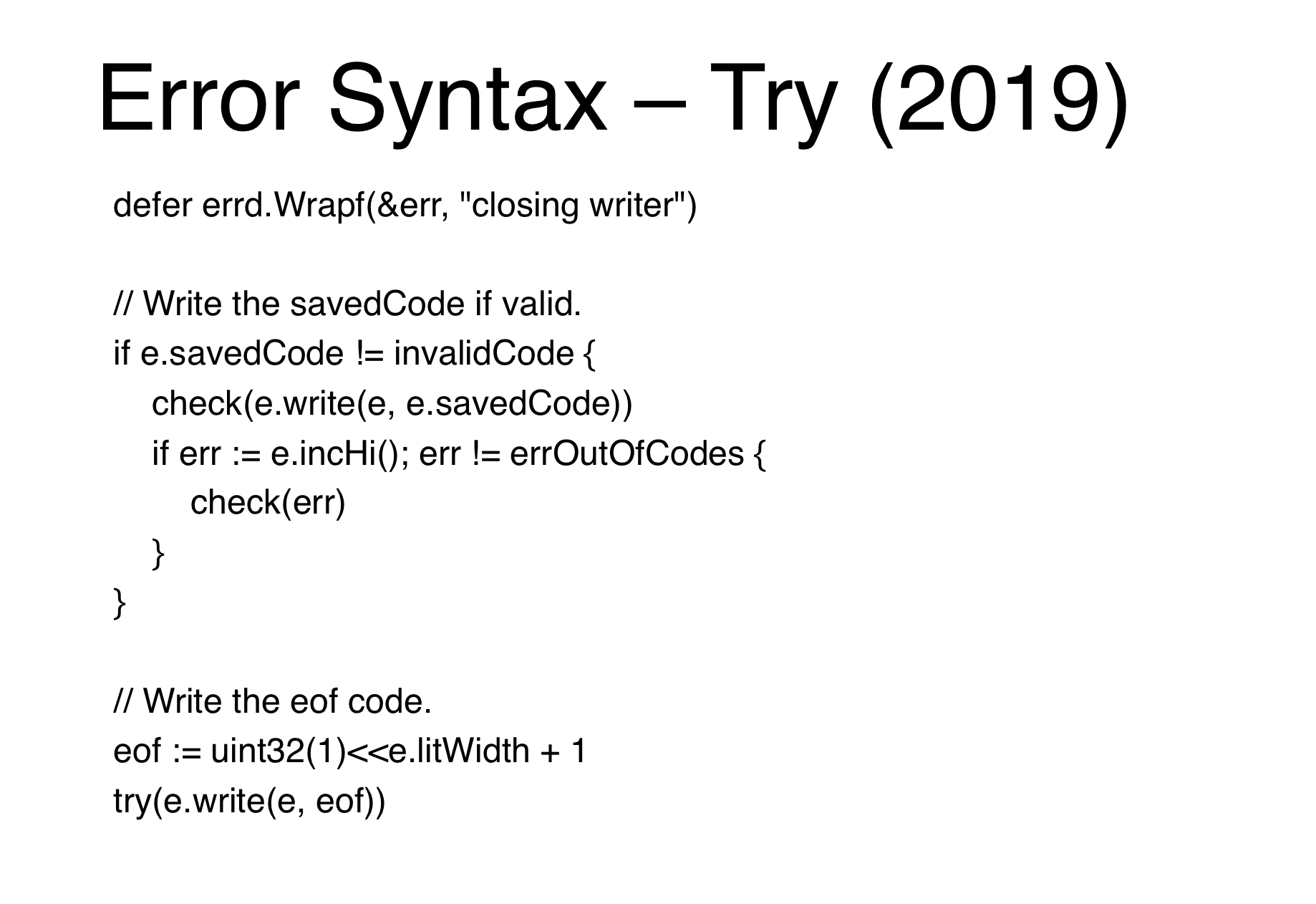
However the try proposal was abandon. The community was concerned that removing the if statement would hurt debuggability (with print statements), readability, and break visibility of coverage tools into those blocks of error handling code. Ultimately it wasn't clear that the try proposal would actually simplify Go overall.
Generics
"Let's talk about something less controversial: Generics" - Russ Cox
We wrote and rejected the first generics proposal in 2010. 3 more experiments were done and rejected by 2013.
We started exploring a new design in 2018: contracts. We're working with programming language theory experts on the problem to help refine the proposal. However, we may still abandon the experiment if it doesn't fit well into the language.
Ian Taylor will present the latest design in his talk tomorrow.
Dependency Management
With Go, we wanted to explicitly refer to dependencies similar to Java.
We started with goinstall which downloaded the dependencies into $GOROOT.
In 2011, we introduced GOPATH to separate the distribution from the actual dependencies so that users could run multiple different distributions and to separate the concerns of the distribution from the external libraries.
We initially left out versioning on purpose to focus on other problems like package installation. We encouraged package authors to adopt the same philosophy around compatibility that the Go team uses:
- Don't make breaking API changes
- New functionality should receive new names
- New import paths should be defined for breaking changes
gopkg.in was a great experiment allowing for importing different changes.
We also had a lot of other great experiments in dependency management early on:

In 2015, we introduced the go vendor spec as a result of how many of these tools operated in practice. By formalizing the vendor directory, we hoped that it would simplify dependency management implementations. In practice, it didn't work as well as we had hoped.
In 2016, we formed the dependency working group. This team started work on dep: a tool to reshape all the existing tools into one.
The problem with dep and the vendor directory is that multiple distinct incompatible versions of a dependency are represented by one import path. We now call this the "Import Compatibility Rule".
We took what worked well and learned from what didn't to create VGo. VGo
provides package uniqueness without breaking builds. VGo dictates different
paths for importing incompatible package versions.
We took this, grouped similar packages and gave these groups a name: Modules.
The VGo system is now go modules. It now integrates directly with the Go
command.
The challenge presented going forward is mostly around updating everything to use modules. Everything needs to be updated to work with the new conventions to work well.
Many tools use the go/build package in their dependency management tooling.
This doesn't work well with both modules, GOPATH and vendor, so we created
golang.org/x/tools/go/packages. This may eventually be merged into the
standard library.
One immediate benefit of Go modules is module proxies. There are a few out there right now, and there are a few talks this year where you can learn more:
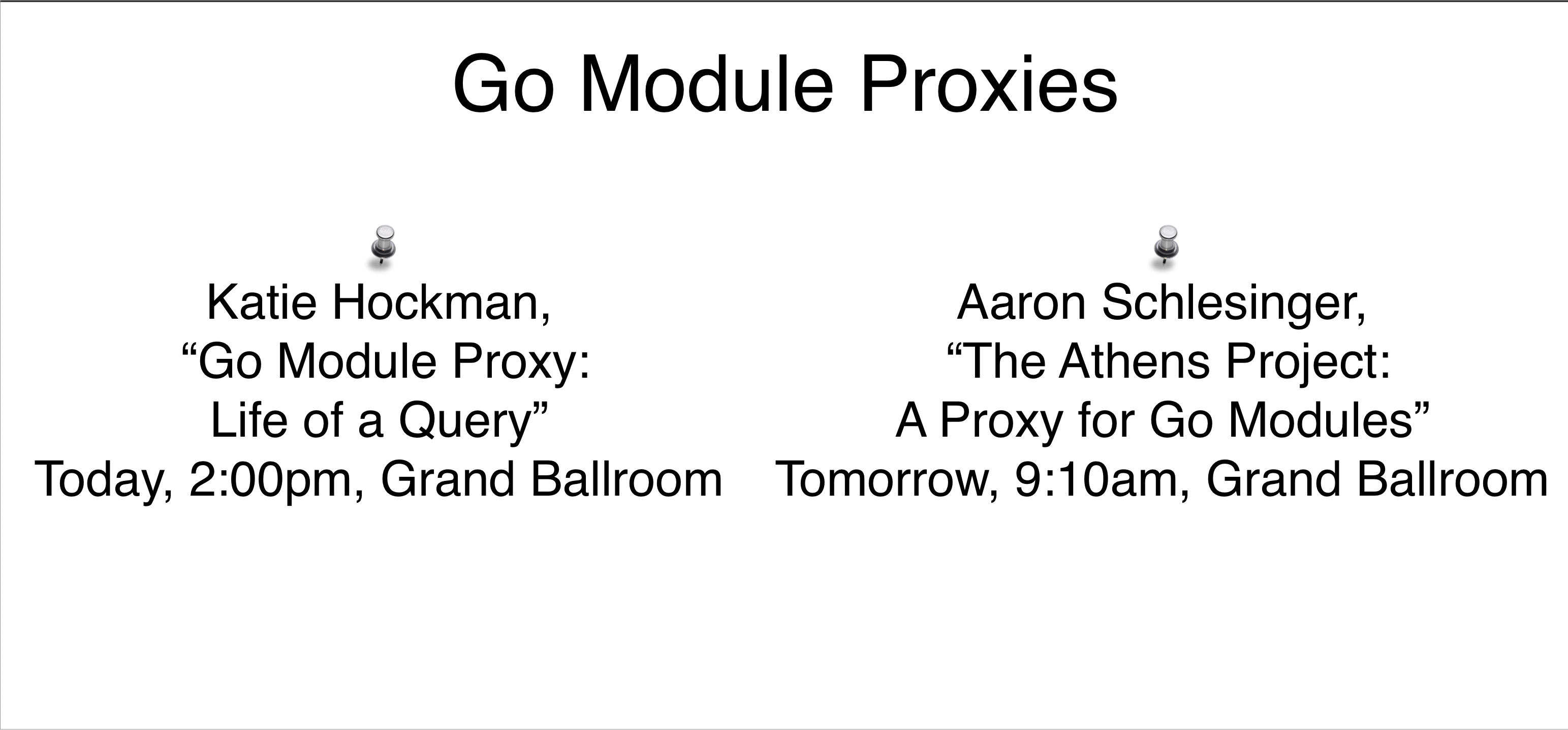
Modules are at a point where we're confident they will support most users. However, we're not ready to shutdown GOPATH just yet. We've got a decade of experience with GOPATH and we're not ready to throw that away.
Please take a look at modules in Go1.13. Kubernetes, a fairly complex project, has already made the move, so it's likely you can too! If you can't, please let the Go team know.
Tools
Finally, as a result of all these changes, we can distill and refine the Go toolchain.
One example of this happening right now is go pls or "Go Please". Go please
aims to create a smoother, standard interface to integrate with all editors,
IDEs, continuous integration and others. See the talk about "Go Please" later
today to learn more!
Conclusion
Each time we release a new experiment, even if we don't adopt it, we learn. Eventually we'll learn that we've experimented enough, and we'll have Go2.